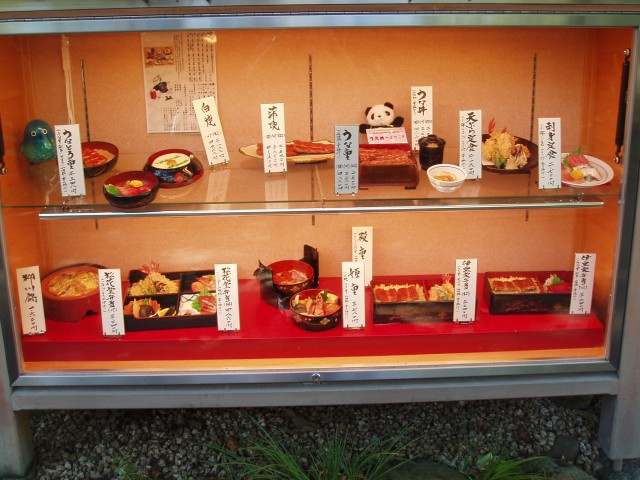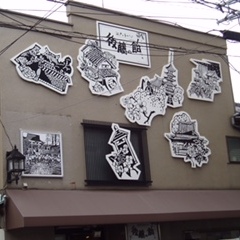Is “Unagi” snake or fish?
The Oxford English Dictionary defines an eel as snakelike fish. It is named “Unagi” in Japanese and a delicate gourmet food.
History of dietary habit of “Unagi”
The dietary habit of eel is described as a nutritious food which improves summer lethargy in Japanese traditional poetry named “Manyoshu” published around 1,200 years ago.
In the period, an eel seems to be tasted by only limited people Unagi became widespread among the common people in the era when Ieyashu Tokugawa established the Tokugawa Shogunate in Edo city (current Tokyo) around 400 years ago.
During this period, the Shogunate widely reclaimed the foreshore of the Tokyo Bay and constructed canals to establish the network of waterway transportation in the city.
These were resulted in providing suitable habitats for wild eels.
People easily caught them in their surroundings and tasted them.
They wildly chopped a whole body of eel into pieces and grilled them being seasoned with soya sauce or soyabean paste or salt in primitive cooking ways.
The way of cooking as seen today was mostly established in the time of the 8th Shougun, Yosimune Tokugawa.
During that period actually the dark colored soya sauce, sweet rice wine and sugar were popularized in the market and the population in Edo city was growing considerably.
Eels were filleted to remove their guts and bones. And then they were grilled while being applied with the mixture named “Tare” which made of dark soya source, sweet rice wine and sugar.
It was so called “Kabayaki Style cooking”.
An eel is generally known as a freshwater fish but it lays its eggs and hatches in the sea.


It goes up freshwater and grows up freshwater as well as in rivers, lakes, ponds, and again goes down the stream to the sea.
Recently the catch of eel has drastically decreased due to lack of its habitat, environmental pollution, rise in seawater temperature (El Nino phenomenon) and exploitation. In addition the output of farm raised eel is seriously affected by the decrease of baby eels in the sea.
Under these circumstances the price of eel has been hiked. Now it becomes one of expensive luxury foodstuff. The ministry of fisheries is aiming to realize pisciculture(artificial rearing of fish) from egg to adult eel by 2020. It is a good news to eel lovers. We are greatly expecting to taste the farmed eel at reasonable price.


My favorite Unagi Restaurant in Ueno Park
There is a long-established eel restaurant named “Izuei-Umekawatei” near the Torii-gate of
Toshougu-Shrine in Ueno Park. They have been serving eel dishes for more than 200 years.
The building has modern Japanese style situated on the slant of Ueno Hill facing to Sinobazu-Pond.
It offers atmospheric presence in harmony with the appearance of the forest which changes
seasonally. They are my favorite eel restaurant which I have visited whenever I felt a strong
desire to taste Unagi-No-Kabayaki (Grilled-Eel-Dish) badly.
The Kabayaki served by this restaurant is broiled with soy based sauce without sugar.
It offers a refined and slightly dry taste which is neither overly fatty nor heavy.
When I brought my friends from Osaka or Kyushu to this restaurant, they looked for more rich
and heavy taste. Understandably there might be some difference of tasting between east and west regions in Japan.
“Kabayaki” is most popular to Japanese among eel dishes. A eel is filleted down on its back and its gut and head are removed, after it is cleaned in freshwater showering for 2 or 3 days.
It is then cut into suitable sizes. And each peace is skewered with bamboo sticks and grilled on qualified charcoal fire. Then it is steamed and grilled on the charcoal fire again while being applied with “Tare” made of soy sauce, sweet rice wine and sugar.
“Kabayaki” in Osaka area omits the steaming process so that eel skin can be kept crispy.
It is said that filleting requires 3 years’ experience, skewering 8 years’ and grilling through life long. The grilling process needs so delicate technique to adjust heating degree and doneness of fillets that cooker has to turn skewered fillets and to change their positions on grill frequently while feeding air with fan. Thus the fillets are roasted up with fragrant and juicy finish.
The gravy from the fillets drops on charcoal fire and then evaporates.
The vapor steams and flavors the fillets. The flavor sharpens our appetite and invites a lot of customers into the restaurant.
Is it worth paying money for flavor of grilled “Unagi”?
As for the flavor of Kabayaki, there is a story full of wit and humor,
There used to be a so stingy man in Edo city. He often came to the front of eel restaurant.
He smelled the nice flavor of grilled eel amply and run back to his home.
He ate a cup of boiled rice only with the appetizing flavor.
One day the master of the restaurant noticed the stingy manner of the man and he requested the man to pay the price for smelling. The man got in trouble. He reluctantly took out his purse to pick out the required amount of coins.
The master of the restaurant thought that he did and was just about to receive the coins with pleasure. However the man threw all of them over floor.The coins sound with clinking.
The man said to the master. Hey you! You demand the price for flavor.

So I would like to settle the payment with the sound of coin to your request.The stingy man could get over his difficulty with wit. He won this match. The flavor of grilled eel has stimulated people’s carnal appetite throughout the ages.Eel has been cooked in various styles such as fried, simmered, roasted, smoked and jellied all over the world.
In the ancient Roman Empire, upper class people were enjoying the taste of eel as delicacy.It is surprising that they cooked eel in the same style as Japanese Kabayaki.
Eel was sliced on its back and roasted on charcoal fire while being brushed with Tare, made of fish sauce and honey. And besides the cooker flapped the slice with fan made of papyrus or feather.
They might have excellent technique to adjust charcoal heat.
It is observed that visitors from overseas avoid tasting eel since the fish looks like snake.
However, once tasting, Kabayaki style of eel will surely attract them and enable them to repeat the dish.It is reported that Steven Spielberg(movie director) and Tom Cruise(movie star) are very fond of Eel’s Kabayaki style.
Many foreigners will visit Japan over next Olympic Game in 2020. I would like to recommend to them to enjoy Kabayaki style dish as one of Japanese traditional food.
Name Izuei-Umekawa-Tei
Address 4-34, Ueno-Koen, Taitoh-Ku, Tokyo
Tel 03-5685-2011
Business hour 11:00-22:00 & 17:00-22:00 for weekday
11:00-22:00 for Saturday, Sunday and National Holidys
Izuei-Umekawa-Tei

Izuei-Umekawa-Tei

